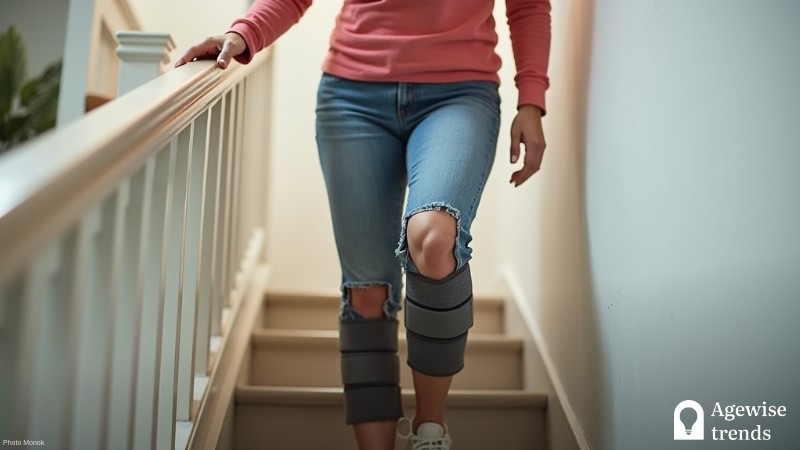Arthritis is a widespread condition that affects millions of people, and the struggle is particularly pronounced for those in their later years. An estimated 53 million adults across the country grapple with the limitations arthritis places on their daily lives. For many, simple actions like climbing stairs or bending down to tie a shoe become challenging, as joint pain and stiffness take center stage.
But despite the discomfort and frustration arthritis often brings, experts argue that one of the best ways to manage the condition is through movement. Physical activity can be both therapeutic and transformative for individuals, helping them maintain mobility and reduce stiffness. It’s not about pushing through pain but rather taking the time to listen to the body and adjust routines as necessary.
Key Takeaways
Arthritis affects over 53 million American adults, causing significant daily challenges like joint pain and stiffness, yet staying active is essential for managing symptoms.
- Regular physical exercise helps ease arthritis by enhancing joint flexibility and reducing stiffness.
- Consulting healthcare professionals ensures that exercise routines are safe and tailored to individual needs.
- Support from peers combined with proper medical guidance significantly improves the quality of life for those with arthritis.
Exercise: The Key to Relieving Joint Pain
Dr. Martin, a prominent medical educator at the University of Pittsburgh Medical Center, emphasizes that physical exercise is crucial for those living with arthritis. It may sound counterintuitive—moving joints that are already painful—but exercise works as a natural lubricant for the body. Over time, it increases joint flexibility and helps alleviate the stiffness that often accompanies arthritis.
The type of exercise varies depending on the type and severity of arthritis an individual has. For instance, someone with knee osteoarthritis may benefit from strengthening exercises, particularly ones that target the thigh muscles. These exercises help stabilize the knee joint, which can reduce pain and improve function.
Aquatic therapy, which involves exercising in water, is another highly recommended approach. The buoyancy of the water alleviates pressure on the joints while providing gentle resistance to improve strength and mobility. This type of therapy allows individuals to perform exercises they may find difficult on land.
It’s essential, however, for anyone starting a new exercise program to consult with a healthcare professional or physical therapist. These experts can ensure the exercises are done correctly, preventing injury and avoiding exercises that could worsen the condition. The goal should be to engage in low-impact activities that promote circulation without causing additional discomfort.
Real Stories: Living with Arthritis
The advice from professionals is invaluable, but sometimes the most meaningful insights come from those who are living with arthritis day in and day out. Take Martin, for example. After being diagnosed with psoriatic arthritis seven years ago, she realized that managing the condition required more than just medication. She made dietary adjustments, cutting out inflammatory foods like white bread, pasta, and sugar. These changes helped her better manage flare-ups.
Martin also stresses the importance of finding a supportive healthcare team. “A doctor who listens and is proactive makes a world of difference,” she says. Along with professional help, she also found comfort in support groups. Talking with others who understand the struggles of living with arthritis provided both emotional encouragement and practical advice.
Similarly, Wohlfarth, who has dealt with rheumatoid arthritis for over 20 years, emphasizes the importance of stress reduction. “It’s easy to let the condition control your mood, but stress can make symptoms worse. Stress reduction is key,” he shares. Wohlfarth also speaks to the importance of sticking to a strict medication regimen and being patient with oneself. The key, he says, is to focus on what you can do instead of what you can’t.
Both individuals agree that regular visits to a rheumatologist are crucial. Personalized treatment plans tailored to specific types of arthritis—whether psoriatic, osteoarthritis, or rheumatoid—help guide people toward the most effective therapies.
The Role of Community and Support Networks
For older adults, the challenges of arthritis can feel especially daunting, but a supportive community and proper guidance can make a significant difference. Integrating physical activities into daily routines can be transformative, and for seniors, that might mean participating in low-impact exercises like swimming, yoga, or even chair exercises designed specifically for those with arthritis.
A holistic approach that blends physical activity with mental and emotional well-being is vital. Seniors can benefit from workshops on healthy eating habits, which can help reduce inflammation, and stress-reducing techniques such as deep breathing or meditation.
Many senior programs are designed not only to educate but to build a sense of community and emotional support. Being part of such a group provides encouragement, camaraderie, and a chance to share advice and experiences.
It’s not just about managing the condition—it’s about improving quality of life. Through the combination of medical care, exercise, and a strong support network, seniors with arthritis can maintain a higher degree of independence and live more fulfilling lives.
Whether it’s through physical therapy, joining an arthritis support group, or learning about new ways to reduce inflammation through diet, the tools are available to enhance mobility and manage symptoms. By taking an active role in their own care, individuals can gain better control over their health and well-being.
By incorporating these holistic strategies, those facing arthritis can not only manage the daily challenges but thrive, leading more independent and active lives.














